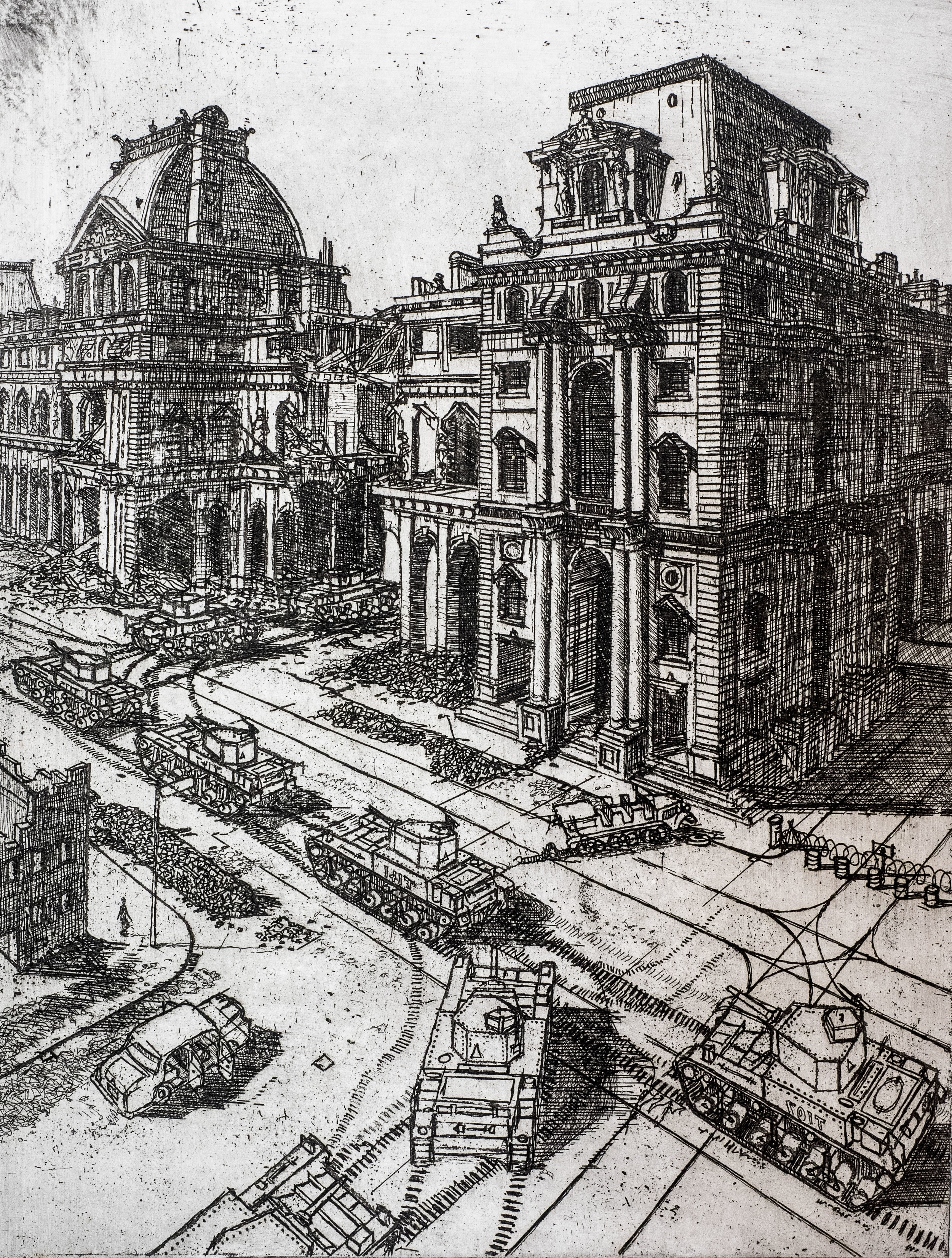
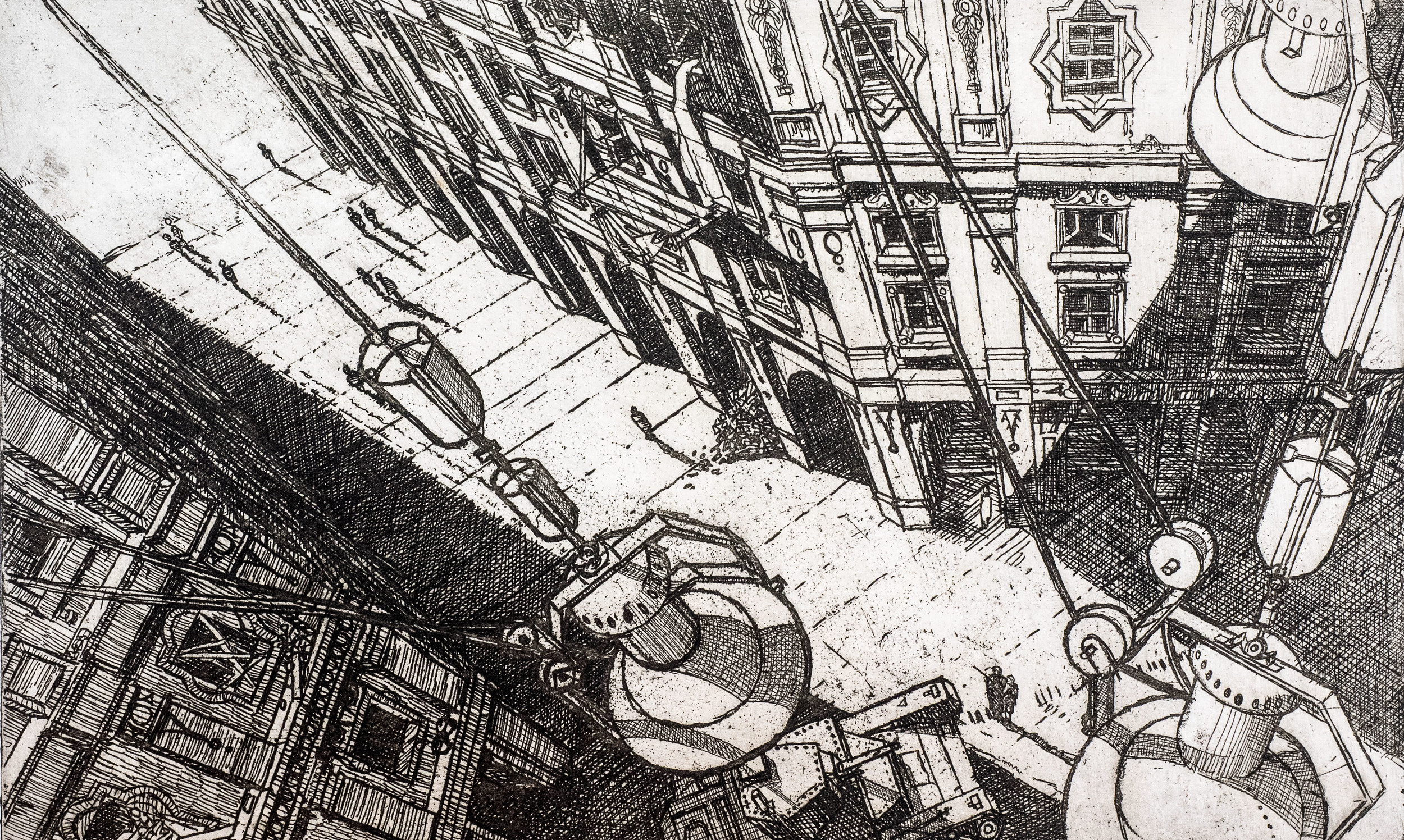

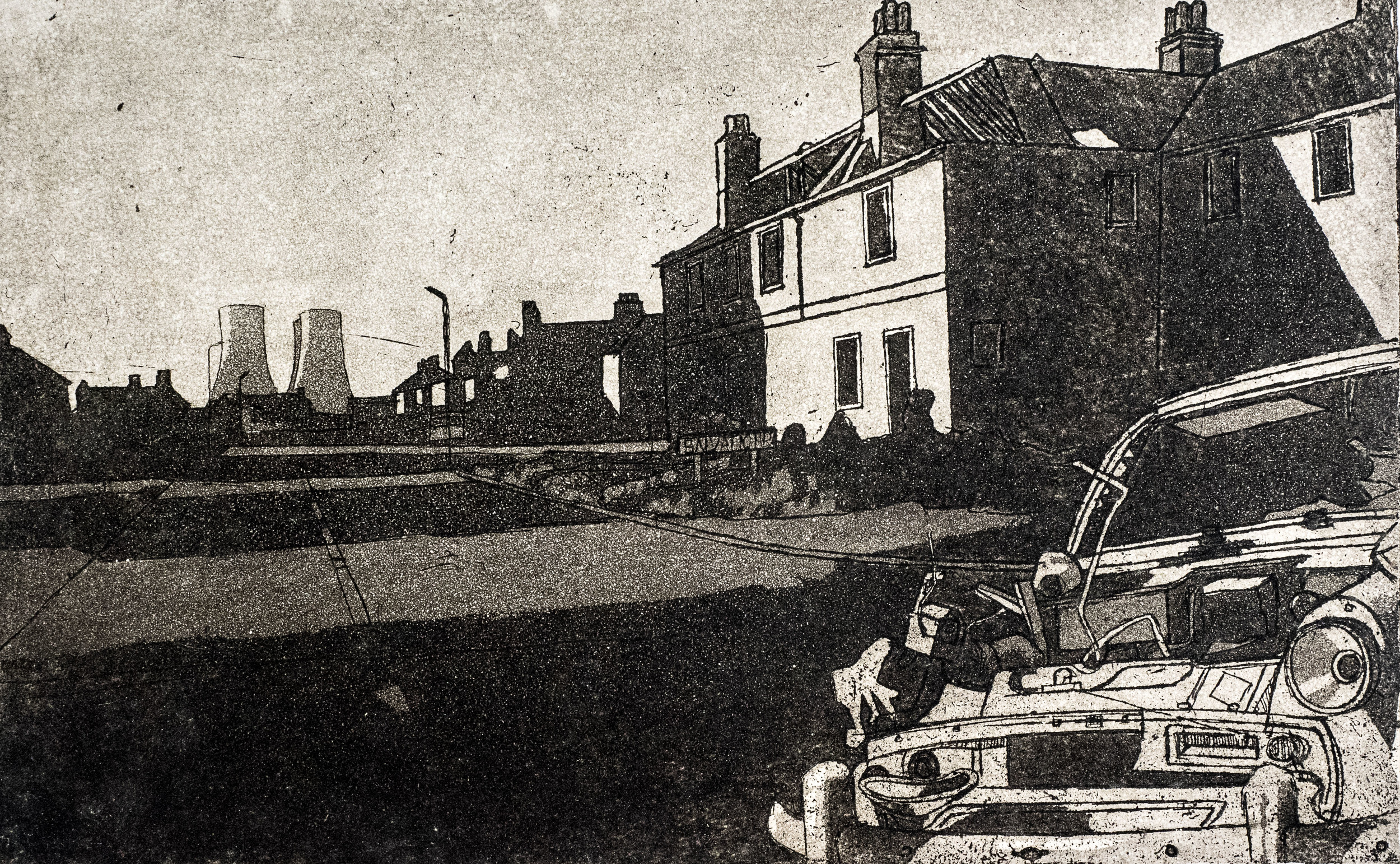

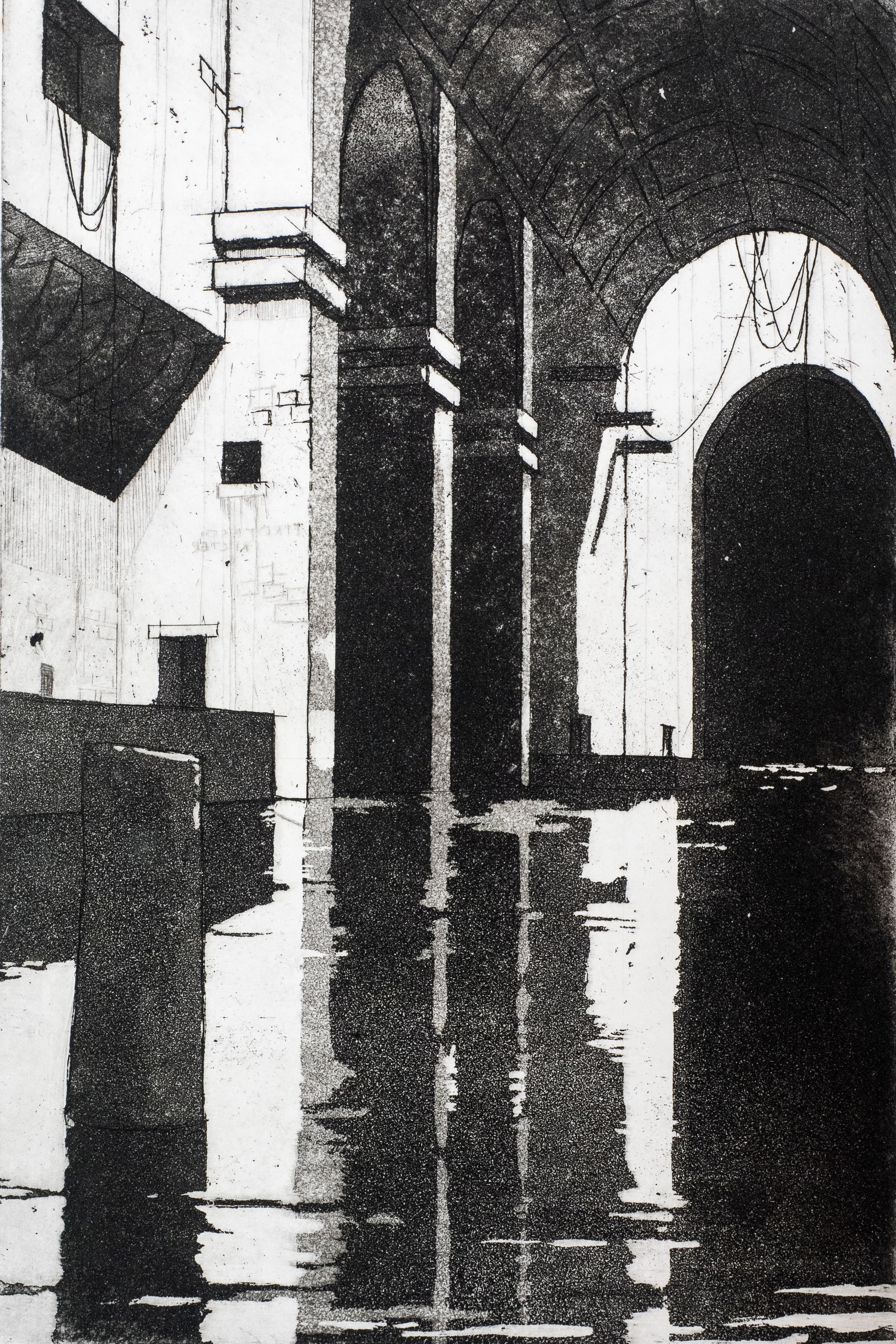



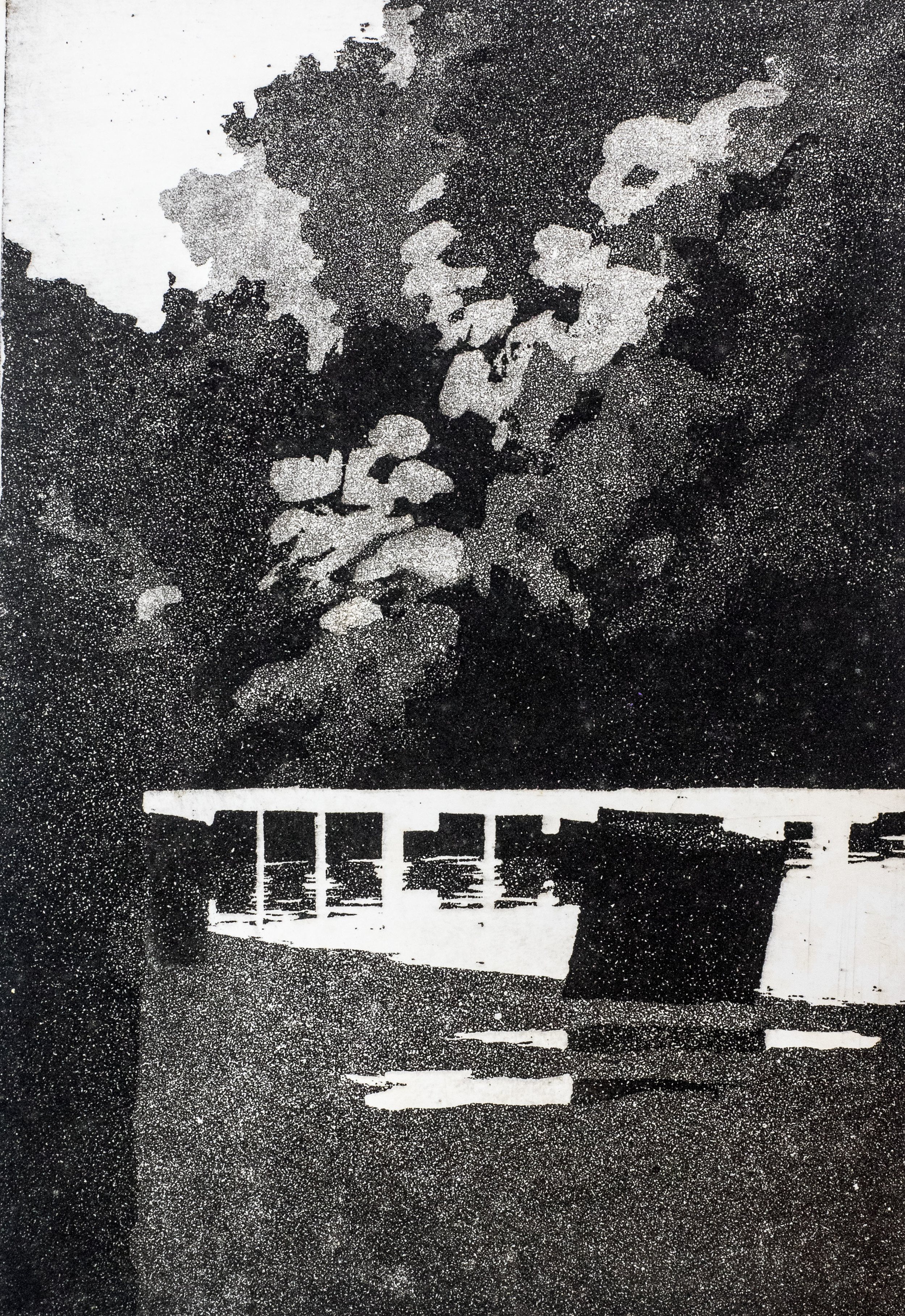

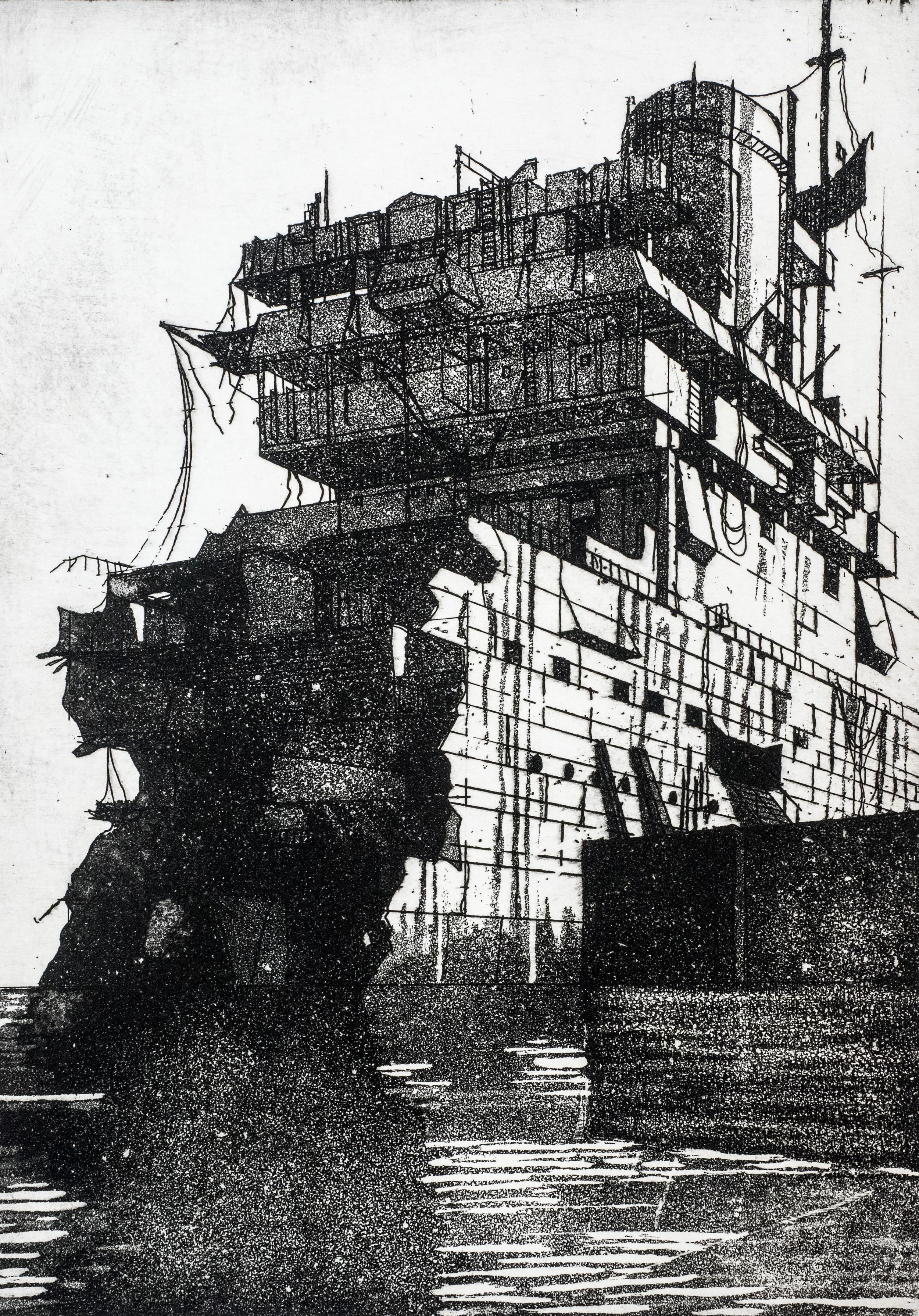
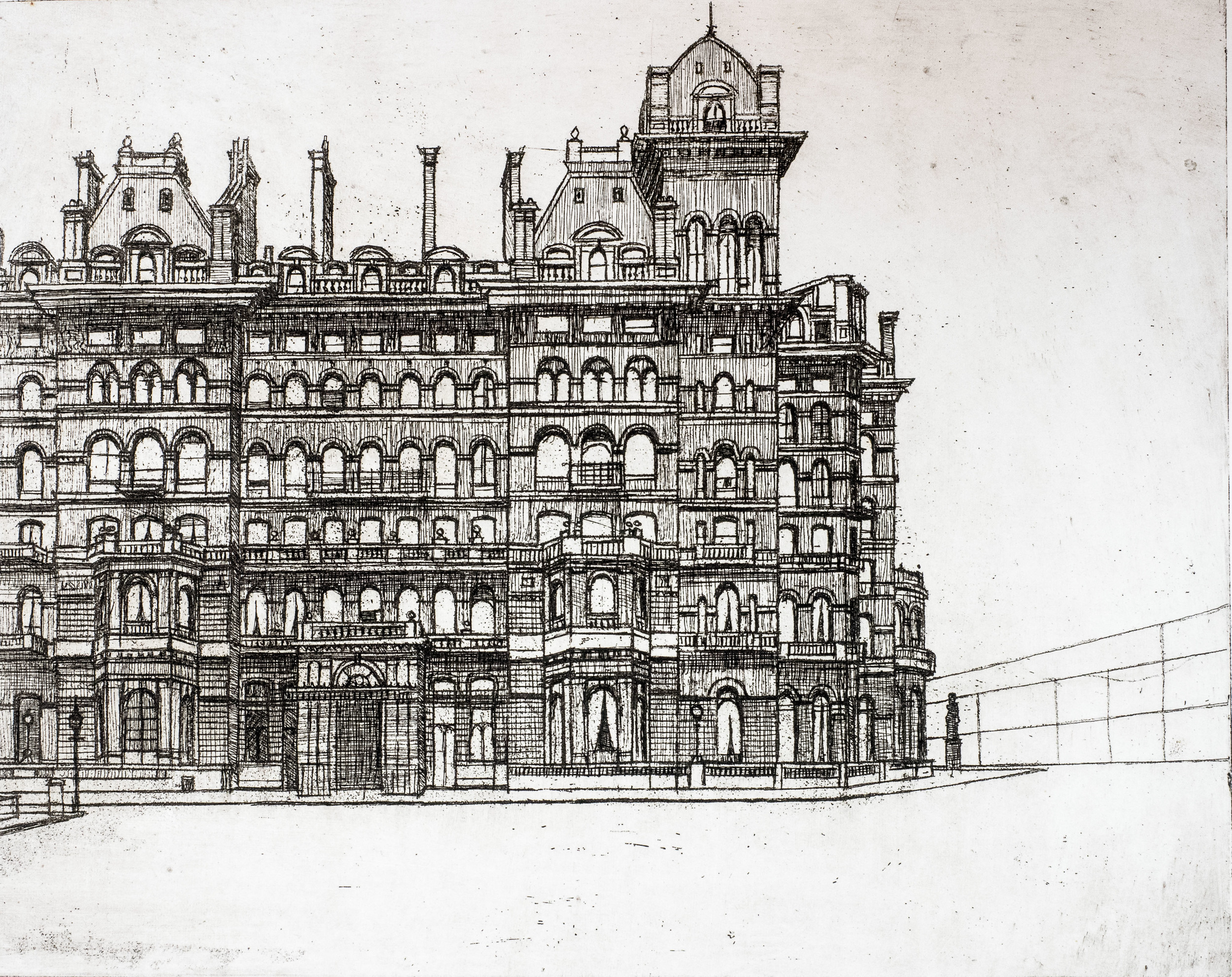

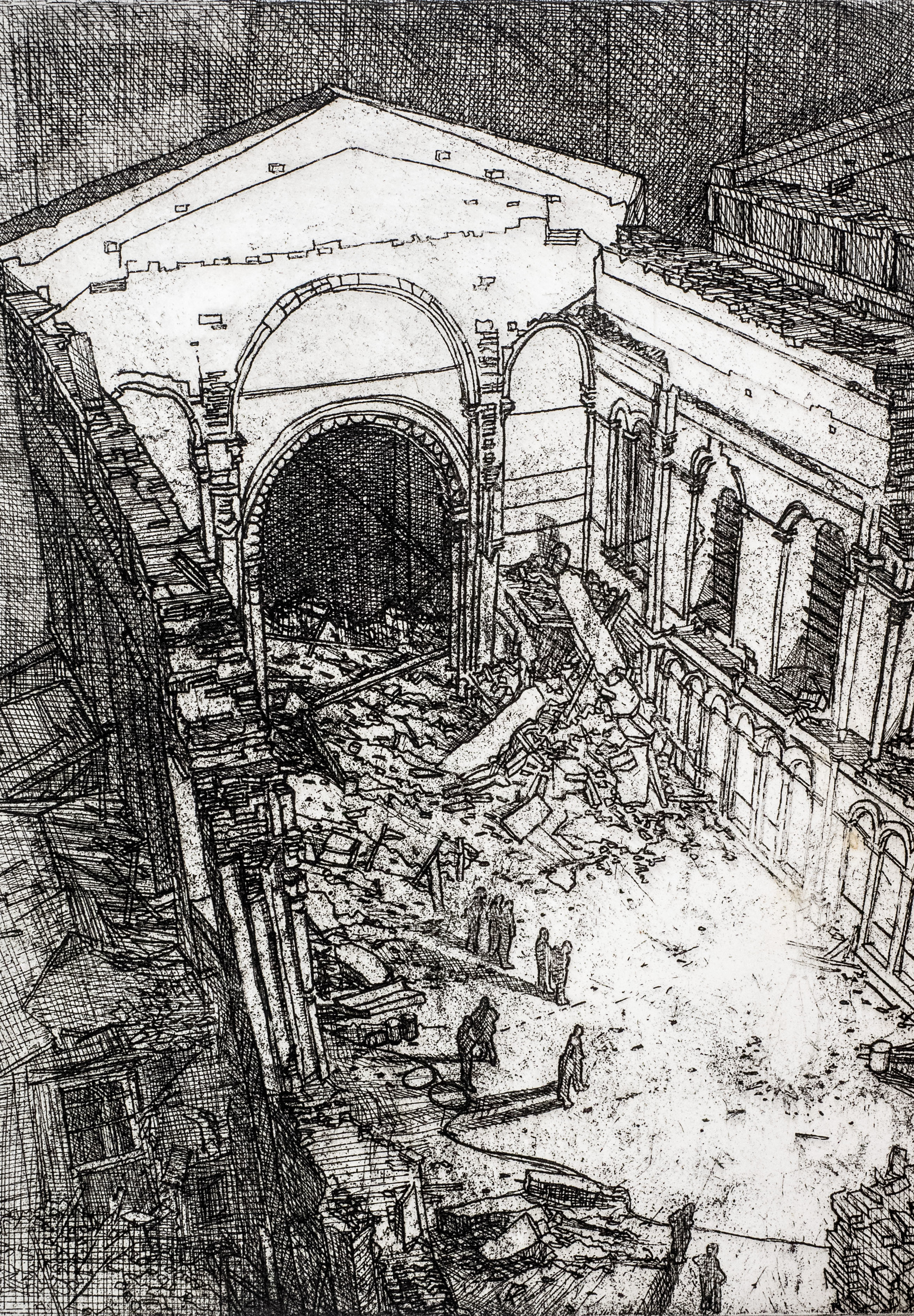
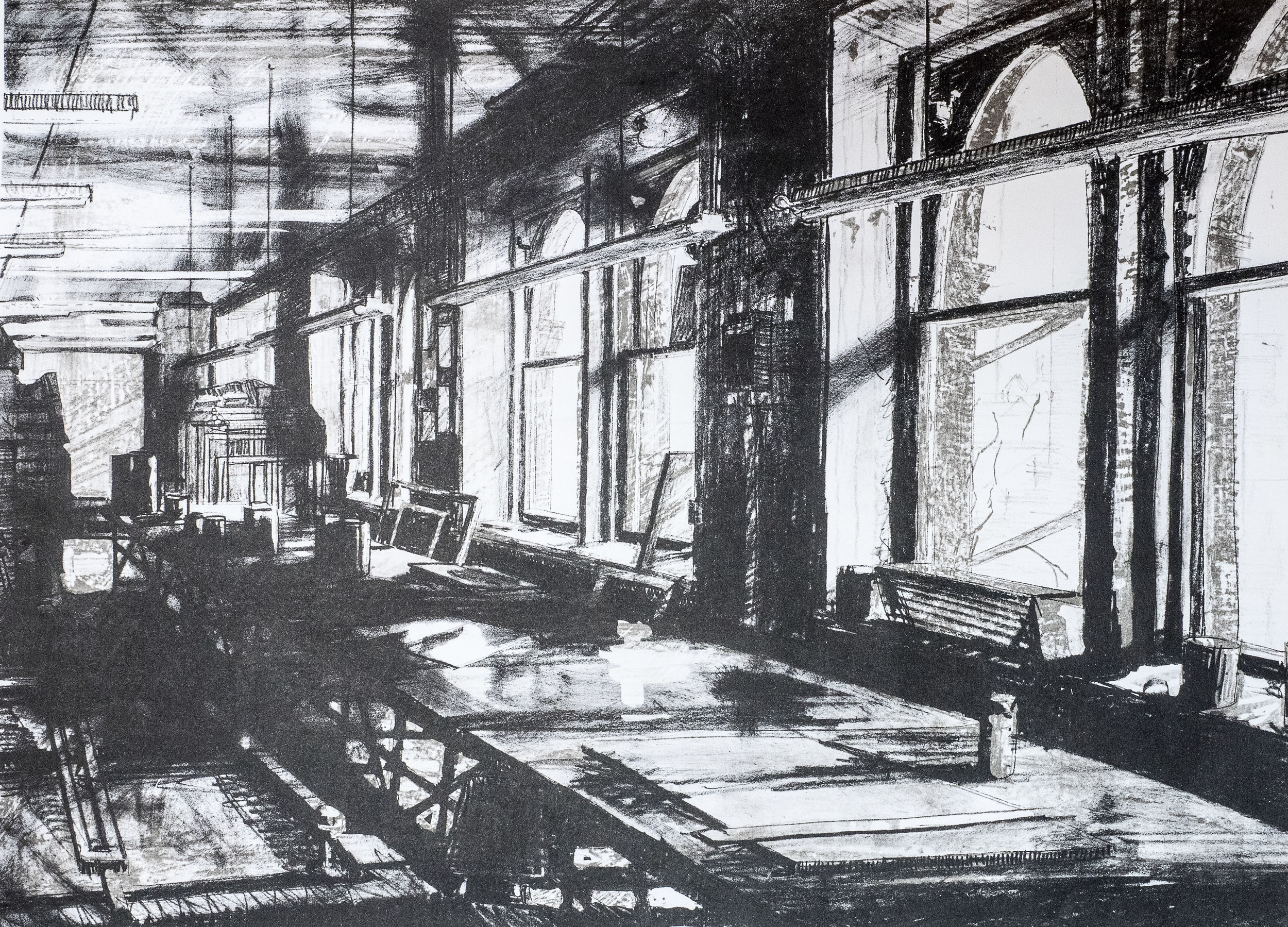
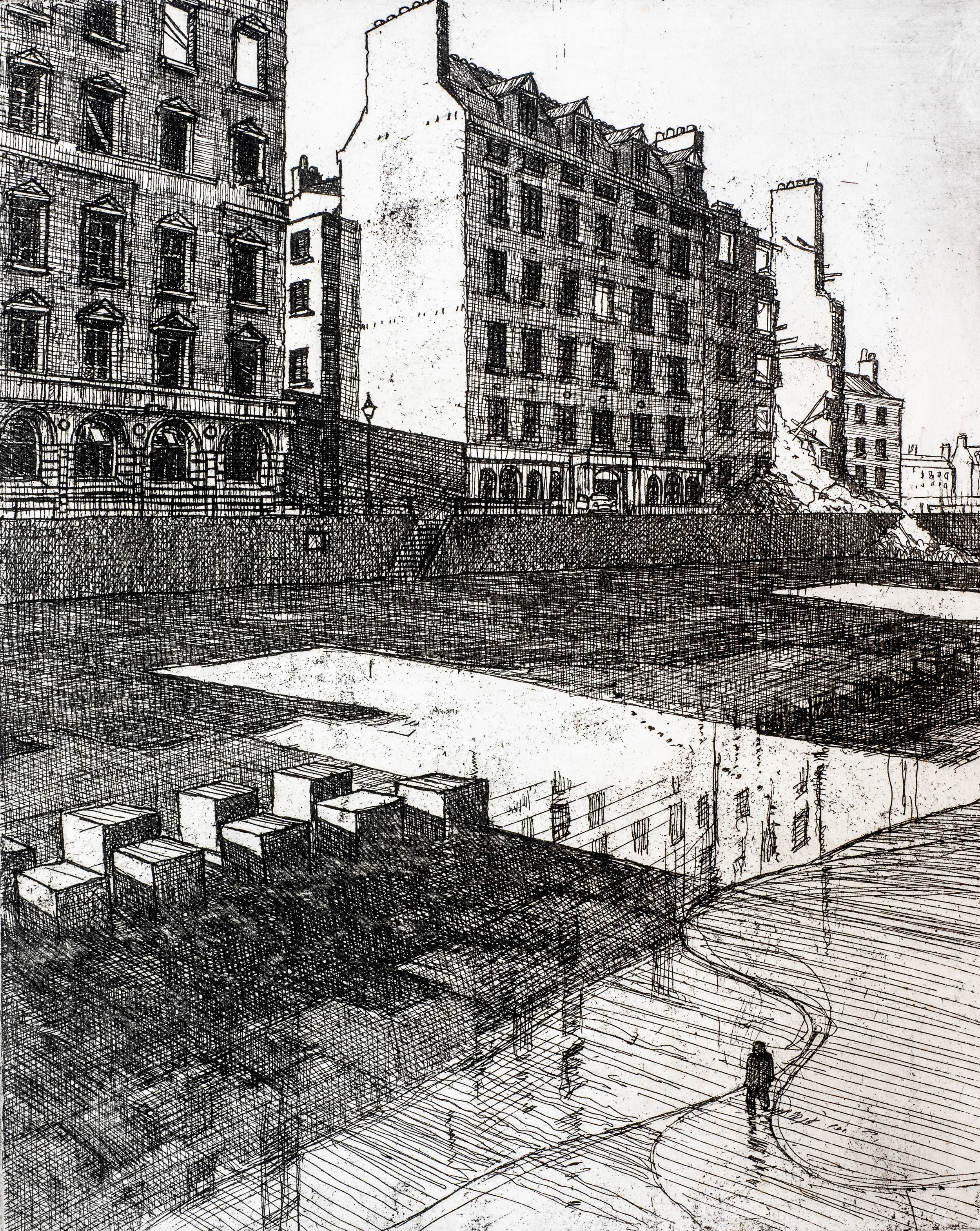


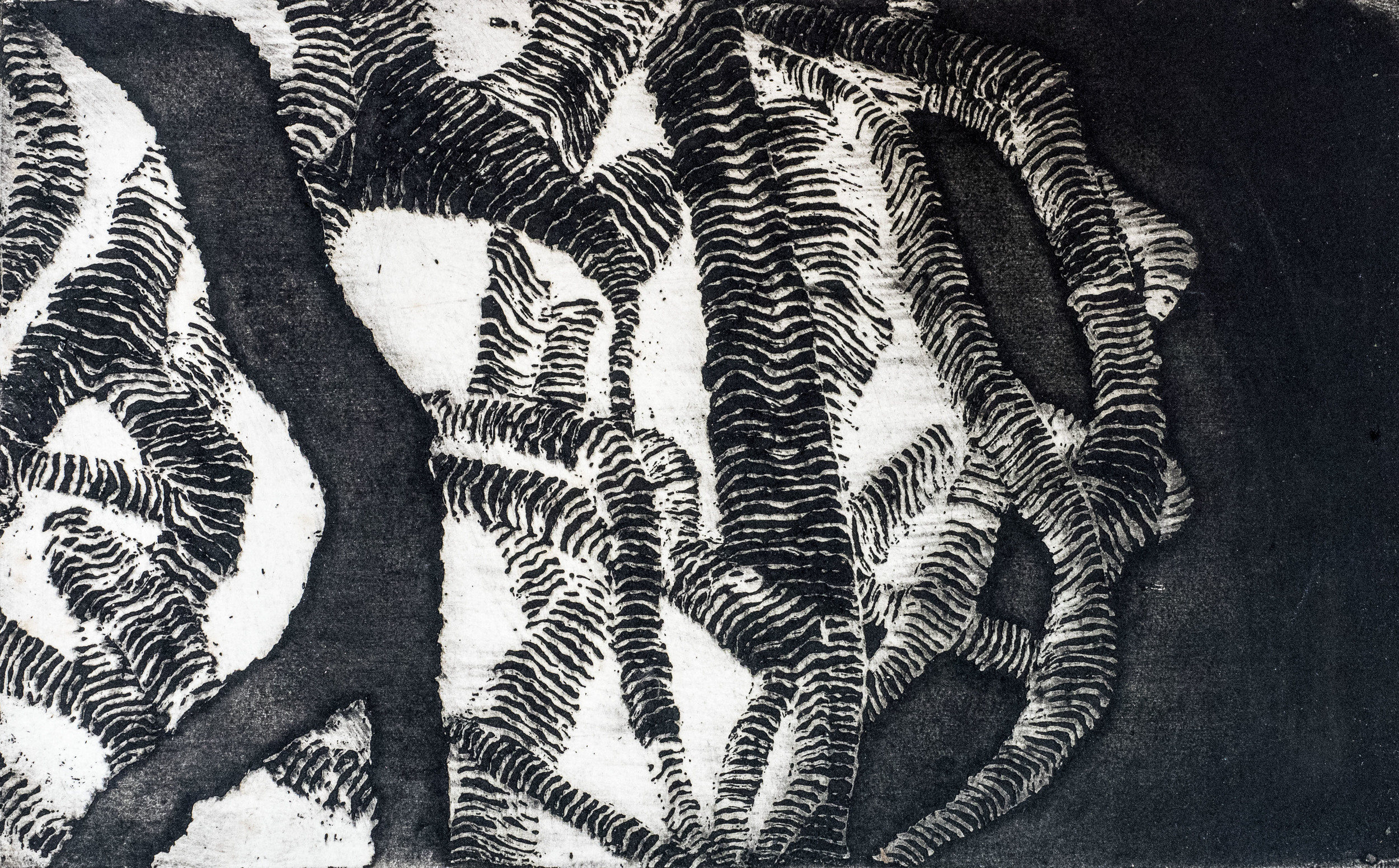


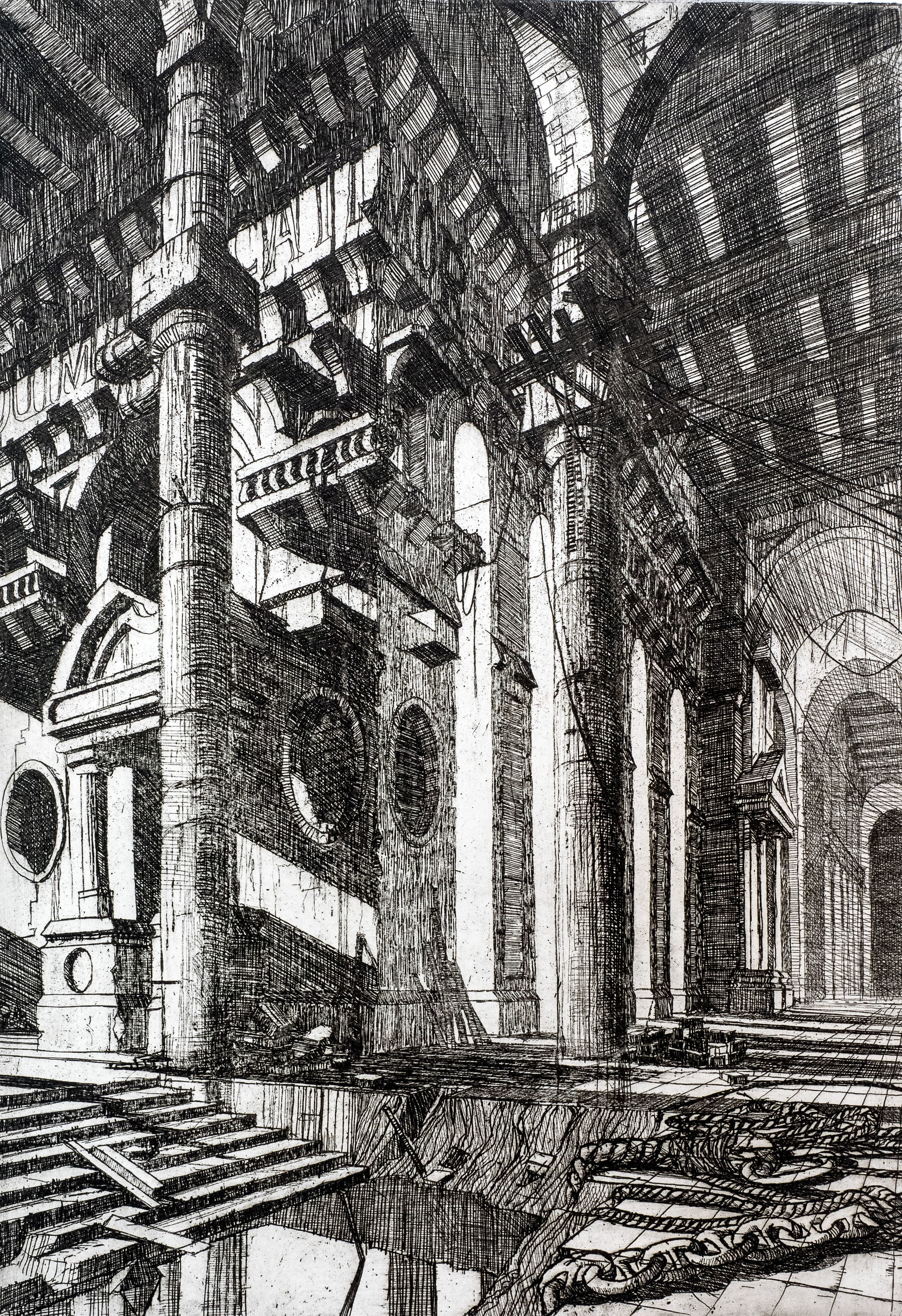
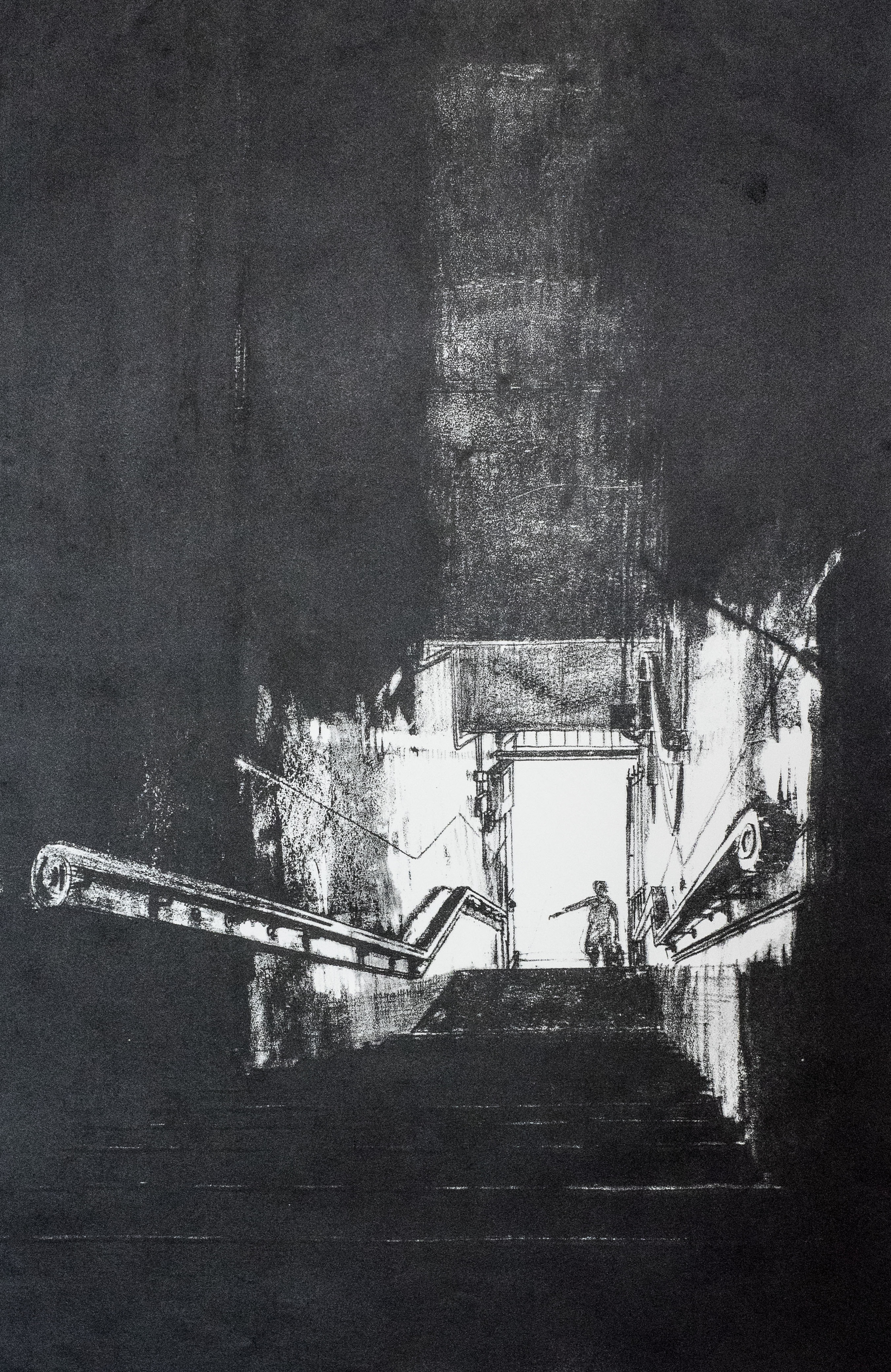


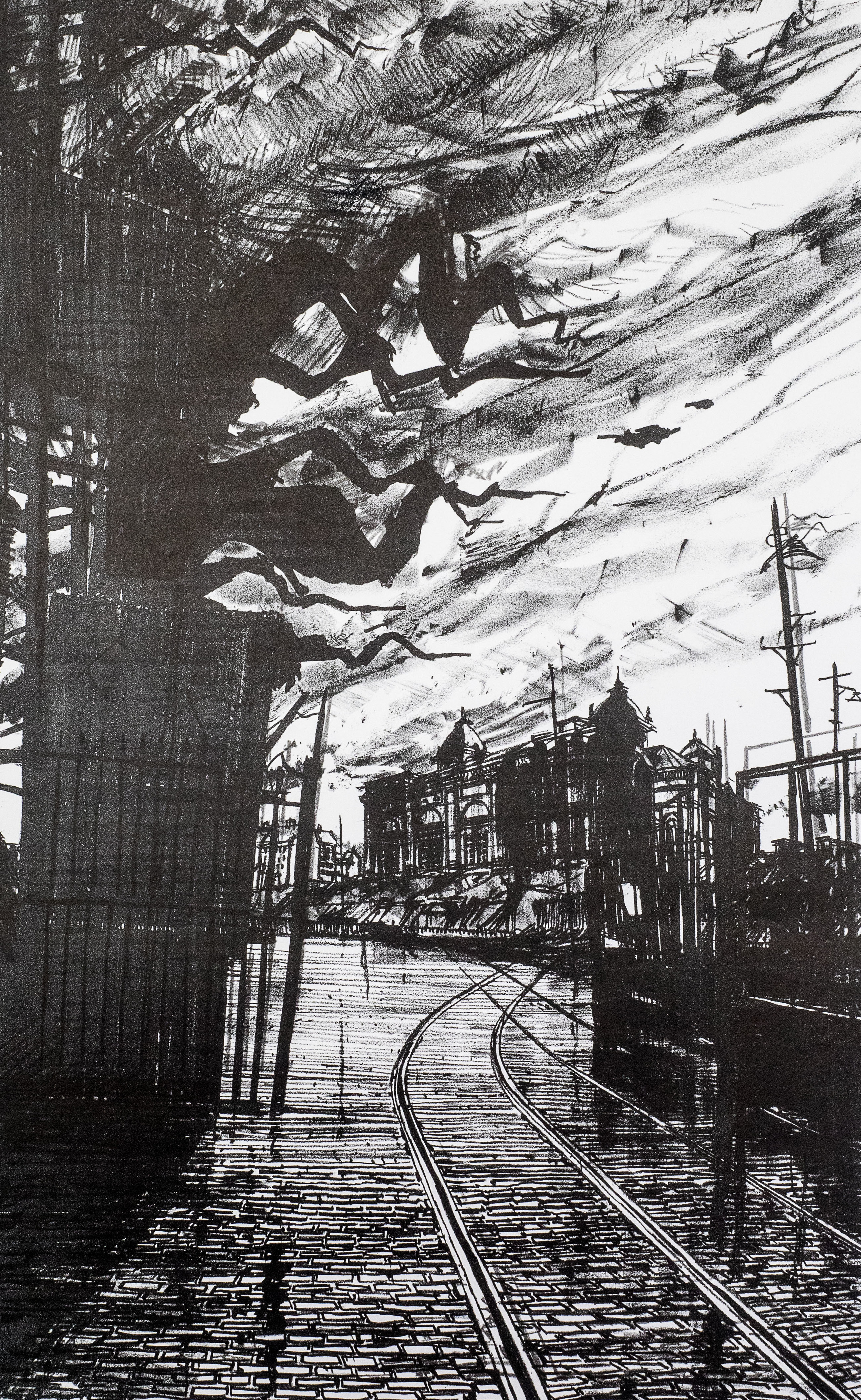

I was introduced to etching in 1969 by Frank Slater, the genial moustachioed head of the Art Department at the college I attended. Etching quite quickly became a serious preoccupation for me, which lasted for maybe fifteen years. It’s difficult to remember exactly what drew me to intaglio printmaking. Something about the big spider wheel press, about the technical esoterica. And something else, to do with the fact that you could rework the small zinc plates repeatedly, taking trial proofs as you went. The images seemed to acquire an authority which I didn’t seem able to achieve through drawing. I bought E. S. Lumsden’s The Art of Etching, originally published in the nineteen twenties, and it became a sort of bible for me.

After I left college I no longer had access to its equipment so I suppose there must have been a hiatus until we moved to Scotland about a year and a half later. My second job after I qualified as a teacher was in Banffshire, where I worked as an itinerant Art teacher, spending half day sessions each week at the village schools along the coast of the Moray Firth: Findochtie, Portessie, Cullen, and other little places. There was a shipyard in Banff town and I spoke to a guy who worked a lathe there. I can’t remember his name but he was very helpful and when I explained what I needed, he understood immediately. He machined the rollers from steel pipe, cut a piece of heavy steel plate for the bed, and we contrived a way to spring the upper roller, using valve springs from a Mini.

I used this press for more than ten years and produced a large number of etchings, aquatints and drypoints, all more or less monochrome, all of a modest size, and all printed on my handmade press. I had a show at the city gallery in York in 1978, which included over eighty prints, as well as paintings and drawings.

When I was still at school, a few of us took to spending weekends at Spurn Point at the mouth of the Humber. My friend Richard Welton’s family had a cottage in Easington village, a few miles away, where we were able to stay. In those days the derelict military installations still stood among the dunes at the end of the point.

Over the years I have made many drawings and paintings of the place. Quite soon after I began making etchings, I made a series of prints of Spurn Point.

A particular story attaches to one of them. The image had a title then, Girl at Spurn. It shows a young woman in a hat standing in front of an old concrete tower. I had sold a copy through an exhibition at the Ferens Gallery in Hull.

Some years later, I read Douglas Dunn’s Elegies, a fine collection of poems written after his wife, Lesley, died. In his poem, Butterfly House, I encountered the phrase, Girl at Spurn. I wondered if Lesley, who had been a curator in the gallery at the time of the show, had bought the print. Whilst trying to put together this text, I was moved to contact Douglas Dunn, and yes, Lesley had bought the print, and Douglas, thirty odd years later, still had it on his wall.

I refer to the images as etchings, but the tonal elements in many of them were achieved using aquatint, and in some cases alterations were made using drypoint. I am not quite certain why I included these details.

At some point, around 1980, I was awarded public money to take time off from my job, in order to work in Glasgow. Glasgow Print Studio, then in Ingram Street, was a gift. I met excellent people and learned a lot. I began making colour prints and producing lithographs. The print studio had a big offset litho press and I was instructed in its mysteries by Dominic Snyder, one of the technicians, a very amiable guy. Offset litho is a great way to work. You can draw and paint the resist onto the plate in an assortment of ways. Size is not a problem, and the printed image is the same way round as the original. You can achieve very dense blacks too. After my first publicly funded stay, I returned to Glasgow many times at weekends and in the holidays, to work at the studio.

This is the first image I made using an intaglio technique, with the help of Frank Slater, the Head of Art at the college. It has nothing much to recommend it except that it marks the start of a project which lasted years. It’s not a conventional etching. The image was painted directly on to the zinc plate with stop out varnish.

The large interior, whilst it clearly owes a lot to Piranesi, evolved out of drawings of the interior of a sugar factory where I was working.

This colour print was probably one of the last etchings I made. Technically, my stuff had grown more competent over the years, partly through contact with the print studio. Unusually, after so many years, I am still quite happy with this print, although it is maybe less intense than the earlier work, more aestheticised.